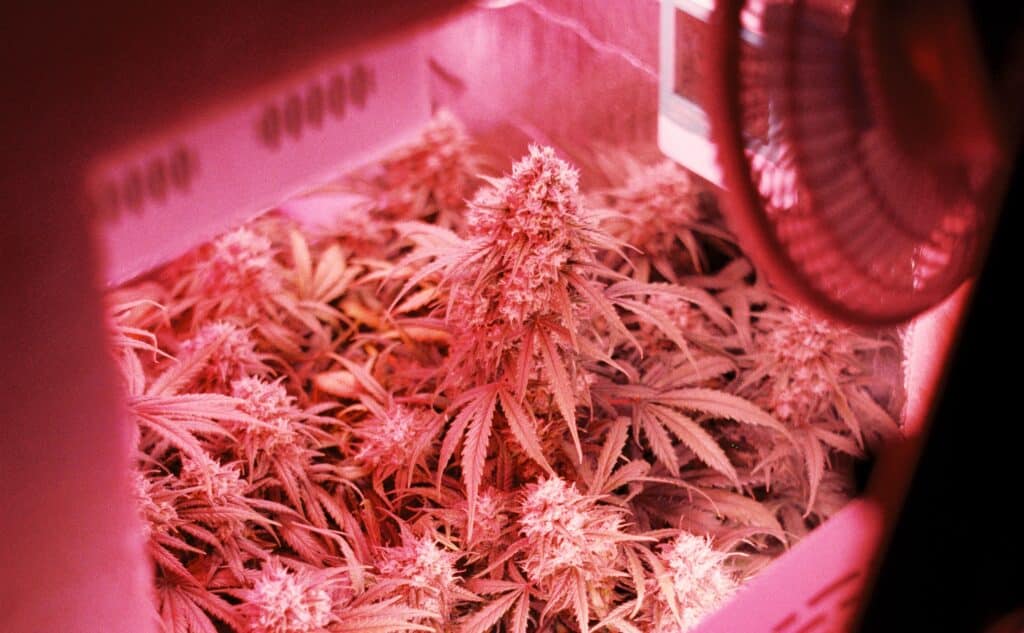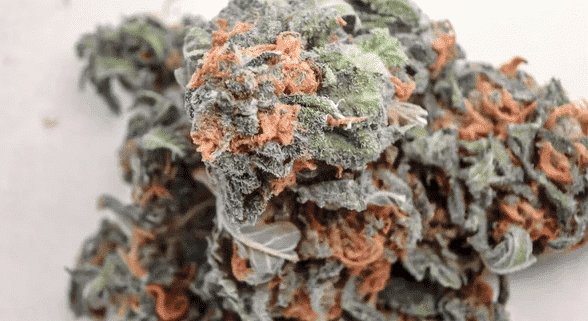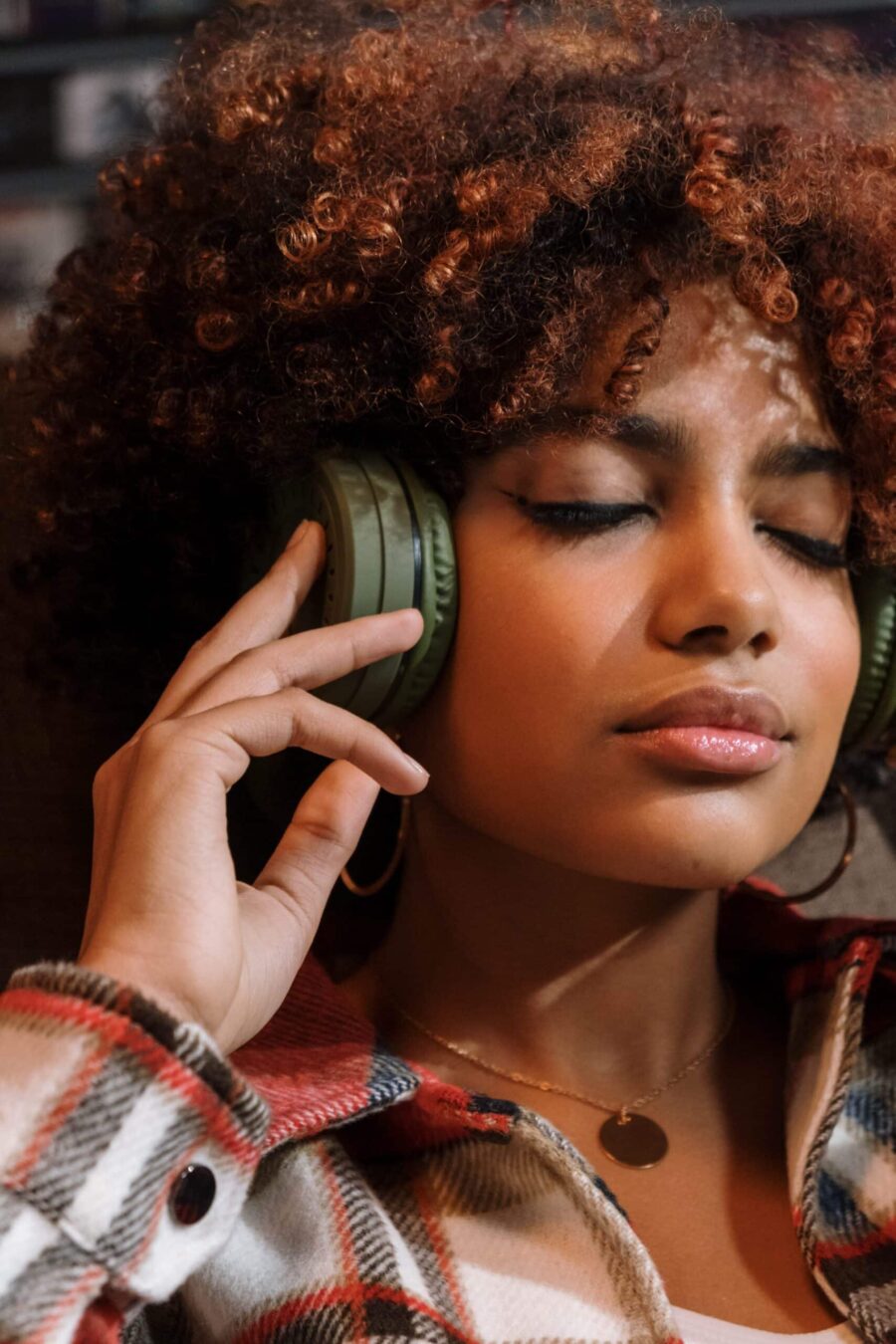No products in the cart.
Marijuana Education
The Complete Guide to LED Lights For Cannabis Grows
LED lights for cannabis have become an increasingly popular alternative to natural sunlight for growing marijuana. Just like any other plant, cannabis requires light as a form of sustenance to develop into a healthy mature plant.
While the use of sunlight is considered the traditional method of growing marijuana, LED technology has advanced significantly in recent years, allowing growers to quickly and efficiently maximize their yields.
As a result, many growers now choose to control the plant’s environment by growing it indoors, providing the cannabis plant with precisely what it needs and less of what it doesn’t. Among the key parameters to regulate are the lighting conditions. Keep reading to discover what distinguishes LED grow lights from “traditional” solutions.
What Are Cannabis LED Grow Lights?
LED is the abbreviation for light-emitting diode. It’s a type of light technology known for being energy efficient. LED grow lights work by producing more light with less energy, meaning that they also produce less heat.
The result of using LED lights compared to other types of lights like incandescent light bulbs and compact fluorescent (CFL) is that they save you on costs.
The use of LEDs in growing cannabis is relatively new in the growth of cannabis, but it’s becoming more popular. LED lights bring an economic advantage over other types of artificial lights.
Growers of marijuana can tap into the usefulness of LED lights to get better yields.
LED Grow Lights vs Natural Sunlight
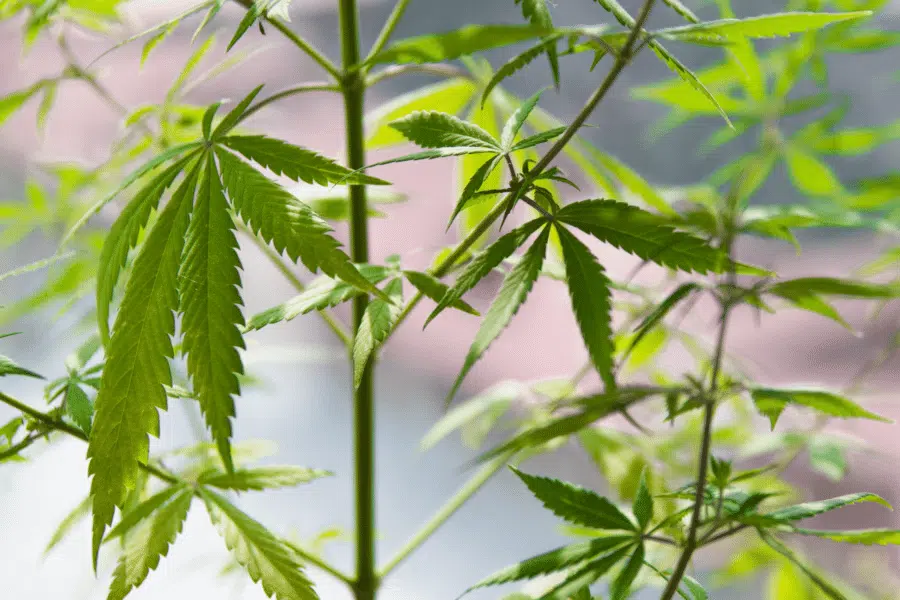
Since its discovery and first use in central Asia, cannabis has been a plant sought after for cultivation. Even when people grew cannabis indoors, they still used natural sunlight to help their crops thrive.
The first patent for a grow light was filed as early as 1912. It was a metal halide type that saw its application indoors. Fast forward to the 1960s, when growers started using LED lamps for growing cannabis plants indoors.
The downside of relying on sunlight in marijuana growth is that growers are at the mercy of the seasons and have to wait long before harvesting. The plants get their lighting needs met based on the season.
The sun usually provides the full spectrum throughout the year. During spring, when days are naturally longer, cannabis seeds naturally germinate thanks to the increase in blue light.
Flowering and budding occur in the late summer and a bit into fall when daylight hours reduce. During this time, the plants enjoy a natural increase in available red light.
The development of full spectrum led technology has made cannabis growing easier. The marijuana industry has gained the following advantages from new lighting technologies like LEDs.
- The grow periods are shorter. Growers can harvest THC-filled buds within 8 to 16 weeks.
- The yields are more bountiful
- Growers have the option of setting up a small to industrial-scale operation of marijuana growing indoors without compromising on bud quality
Types of LED Grow Lights
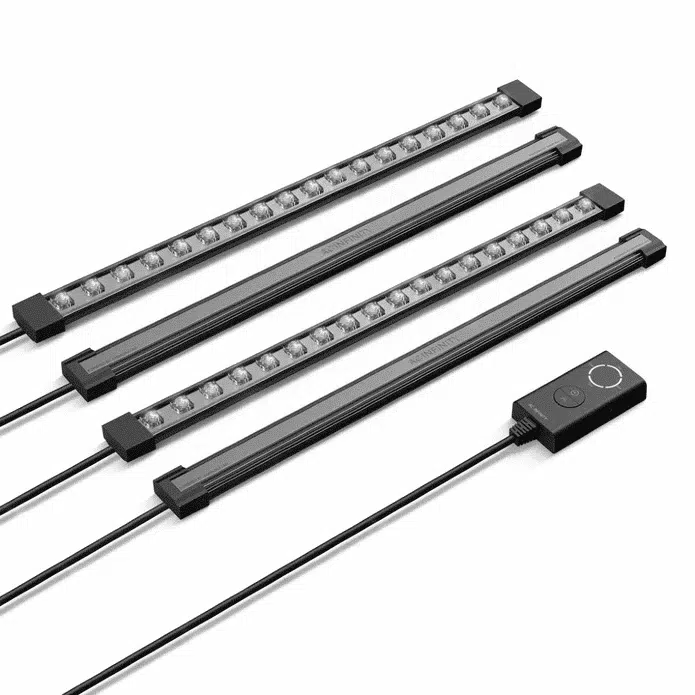
The flexibility of LED grow lights for growing cannabis allows them to have a variety of designs and forms. Below are some more popular ones you can use for growing.
Chips on Board LED (COB)
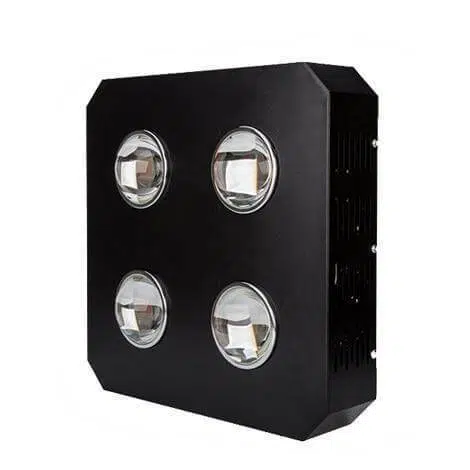
In this type of light, manufacturers place tiny LEDs close to each other on a printed circuit board (PCB). The small LEDs combine to provide a strong array of light. They are useful in penetrating deeper into canopies. The most common color spectrum synonymous with this type of light is pure white.
Since they offer a more centralized form of lighting where the middle area receives more lighting, plants on the edges may need more lighting. This results in growers needing to employ more grow lights to cover the same area.
COB lights also give out a lot of heat compared to other types due to the concentration of the beam of light. During colder months this may prove beneficial but, should be considered in warmer climates, where extra ventilation would be essential.
Spread Style LED
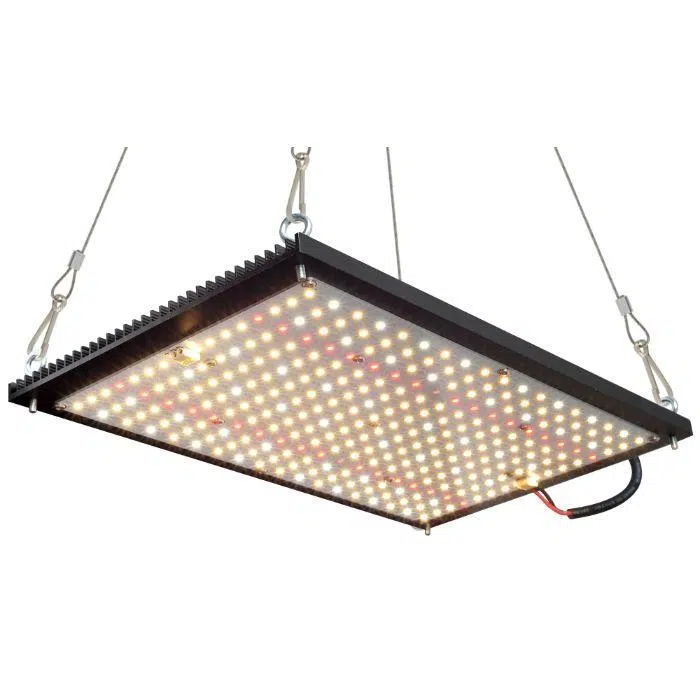
Spread-style LED grow lights contain many small lights over a wide surface area. The result is lighting that covers more plants per unit. They are ideal for use with large-scale marijuana growing.
Due to the arrangement and layout of the small LED lights, they don’t emit very high levels of heat; hence they remove the need for installing additional fans or extra ventilation.
There are several types of spread-style LEDs based on their design. The main ones include;
- Spider Style – They feature multiple LEDs spread out on narrow bars such that they seem to have arms. Due to this design and the complexity of their manufacture, they’re often more expensive.
- Quantum Board – They also feature many small LEDs spread over a flat surface. Their design is much simpler than the spider style. Many of them utilize white diode light and don’t emit too much heat, meaning you can place your marijuana plants right underneath them.
Traditional LED
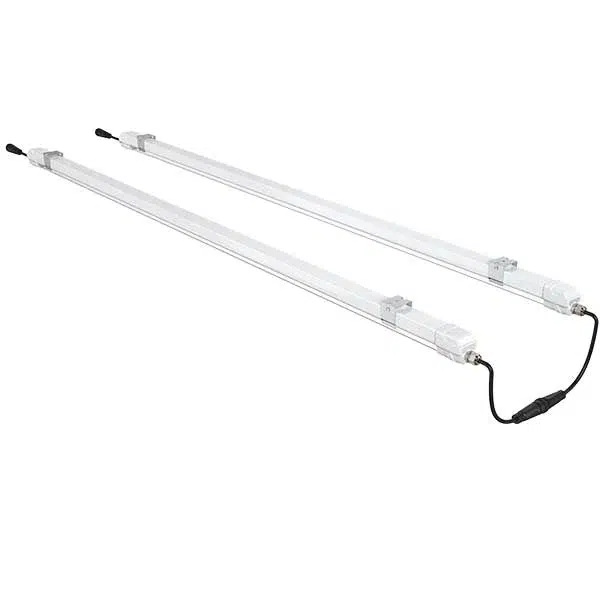
Traditional LED bulbs are usually compact and small, making them ideal for use in limited spaces. The color spectrum of traditional LED grow lights may vary from having an all-white color or covering the full spectrum.
Due to this variability in color, you can use the same LED light for the various stages of the growth of cannabis. You’ll find that cheaper solutions lack the adjustability of higher quality options.
Purpose-made, full spectrum led grow lights allow you to customize the intensity of specific lighting options for each growth stage,
Other Types of Cannabis Grow Lights
Apart from LEDs, the commonly used cannabis grow lights include the following;
High-Intensity Discharge Lights (HID)
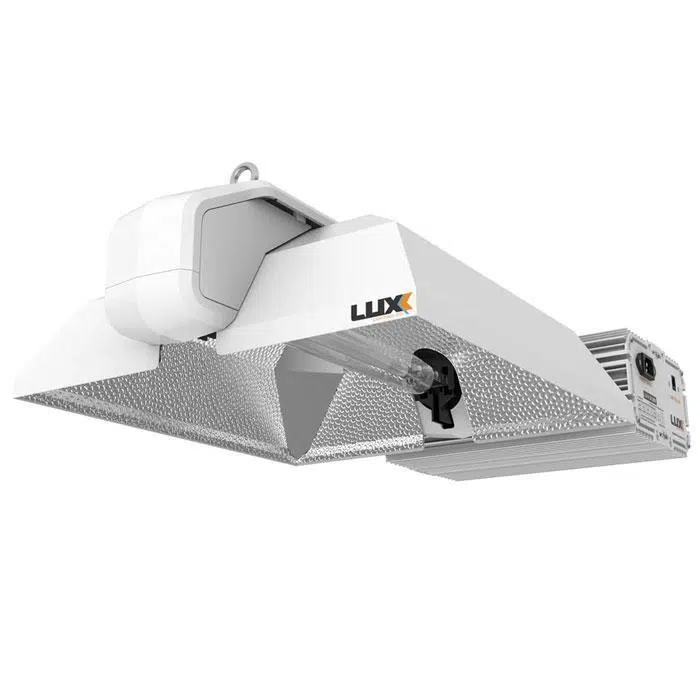
When growing cannabis indoors became popular, growers preferred HID lights over other types. This was mainly thanks to their pure intensity and relative cost-savings.
HID lights vary in wattage from 250W, which you can hang eight inches from the canopy to 1000W lights which you’ll need to hang 26 inches above the canopy.
The two main types of HID lights include;
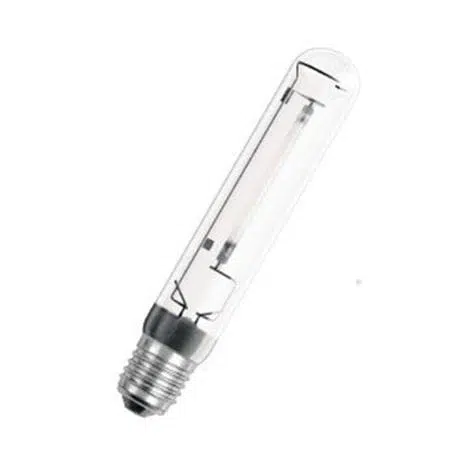
- High-Pressure Sodium (HPS) – Manufacturers make these lights emit light in the red spectrum. It makes them best for use in the flowering stage of growth. An HPS grow light has an average lifespan of up to 18,000 hours.
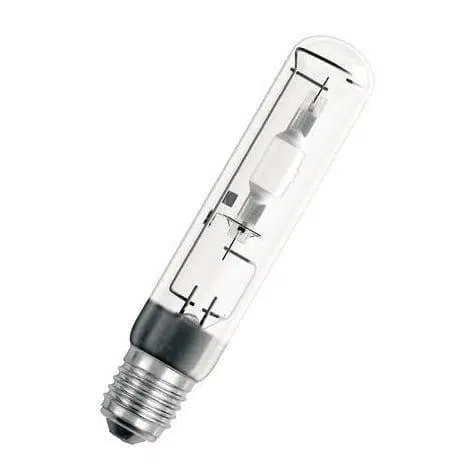
- Metal Halide (MH) – Most of these lights produce blue spectrum grow light. They are best for the vegetative stage of growing marijuana. They have a shorter average lifespan than HPS, reaching around 10,000 hours on average.
Seasoned growers used a combination of both these lights during the span of their plants’ lifecycle. This offered the best of both worlds as far as meeting plants’ needs, as well as extended duty cycle on bulbs.
HID bulbs may be cheaper to implement than LED grow lights, but they are expensive to maintain in the long run. In larger grows, the amount of heat they produce often requires the installation of an HVAC system.
Compact Fluorescent Lights (CFL)
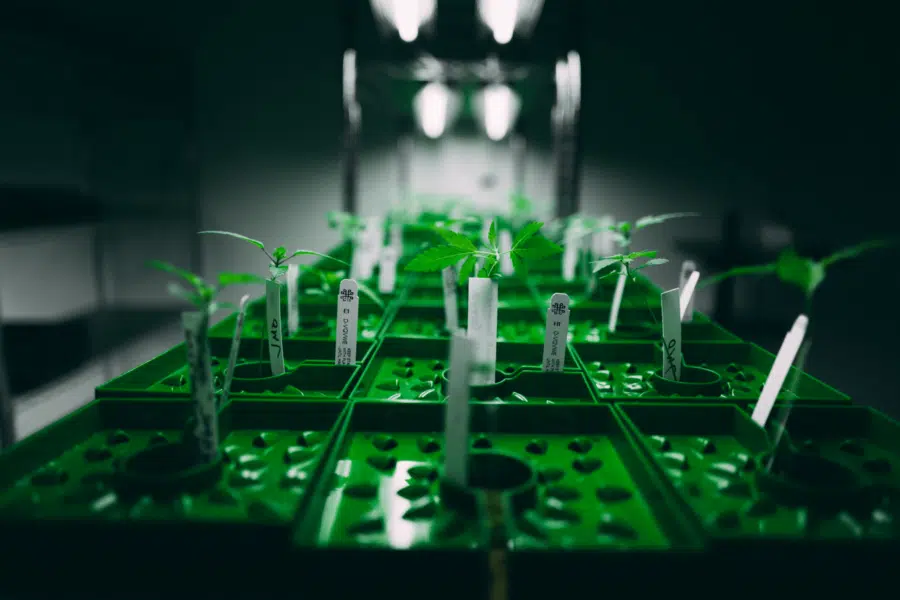
CFLs are the cheaper alternative to HIDs. They are low-energy lights; normally 30 to 60 watts, that produce white light. Traditionally, CFLs are available in two variants:
- Cool white bulbs – These produce more of the blue spectrum light that is ideal for crops during their vegetative stage.
- Warm white bulbs – Produce more red spectrum light that lends itself to plants that are in the flowering stage.
CFLs are a cheap and effective option for marijuana farmers with small-scale cannabis operations. Other advantages of CFLs include the following;
- They are readily available, and you can find them in your nearby grocery or convenience stores.
- They don’t produce a lot of heat compared to other marijuana grow lights like HID lights.
- They are ideal for novice growers who want to learn basic skills in growing weed by taking care of one or two plants.
Despite these advantages, they fall short when you want to upscale your cannabis growing operation and add a few plants. Larger grow rooms will also need a bunch of these to provide sufficient light levels.
How to Grow Cannabis Using LED Lights
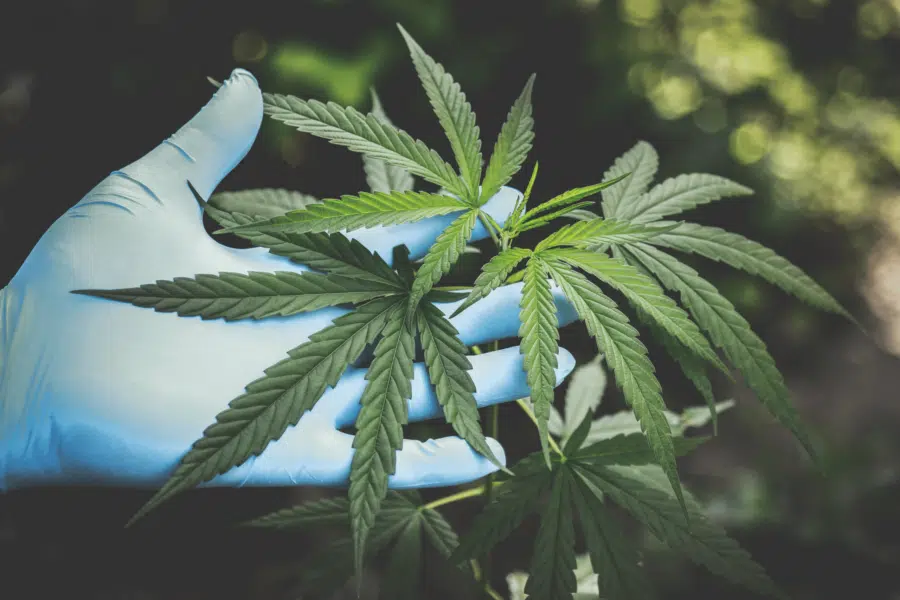
Under natural conditions or in an outdoor setting, the sun provides the all of the needed light to grow marijuana.
The ozone filters the sun’s radiation to allow a light energy spectrum of between 300 to 1100 nm which cannabis plants are attuned to absorbing. The light spectrum is visible and consists of the seven colors you see in a rainbow.
To successfully grow indoor cannabis plants using LED grow lights, you must mimic the sun and provide the different color spectrums that the plant needs in each stage. The main color spectrums the weed plant will need include blue and red light.
It’s easy to grow weed using LED lights if you know the plant’s needs during each stage of its growth. Manufacturers are aware of these needs. Apart from making a full spectrum LED light, they provide lights with switches to activate different light spectrums for the different stages.
Generally, a marijuana plant will go through the following stages of growth.
Seedling Stage
The seedling stage is crucial to the growth potential of the marijuana plant as the young plant is very sensitive, especially to light. It isn’t uncommon to find growers germinating their seeds indoors using artificial lights, even if they plan to grow the weed outdoors.
Even as you help the young seedlings develop their first fan leaves, you should be careful not to expose your cannabis plants to too much light, as you can burn them. Some ways to prevent this from happening include;
- Move your lights further away from the seedlings. While doing so, ensure you don’t move the light too far from the plants and cause stunted growth.
- Use less intense LED lights.
- If the LED light you’re using has settings for lower-intensity light, like a dimming option, use it to reduce the light output.
- Alternatively, you can switch to the spectrum LED light setting suitable for your seedling.
The recommended light period for this stage is 18 hours, followed by 6 hours of light deprivation. The seedling stage can last for about 2 to 3 weeks.
Cannabis plants in the seedling stage benefit more from blue light in the 450 to 500 nm spectrum. It has similar properties as those of UVA light but has less energy.
You’ll have cannabis plants full of cannabinoids when you use blue light in the seedling stage. It’s also crucial for properly developing the seedlings into strong plants.
Vegetative Stage
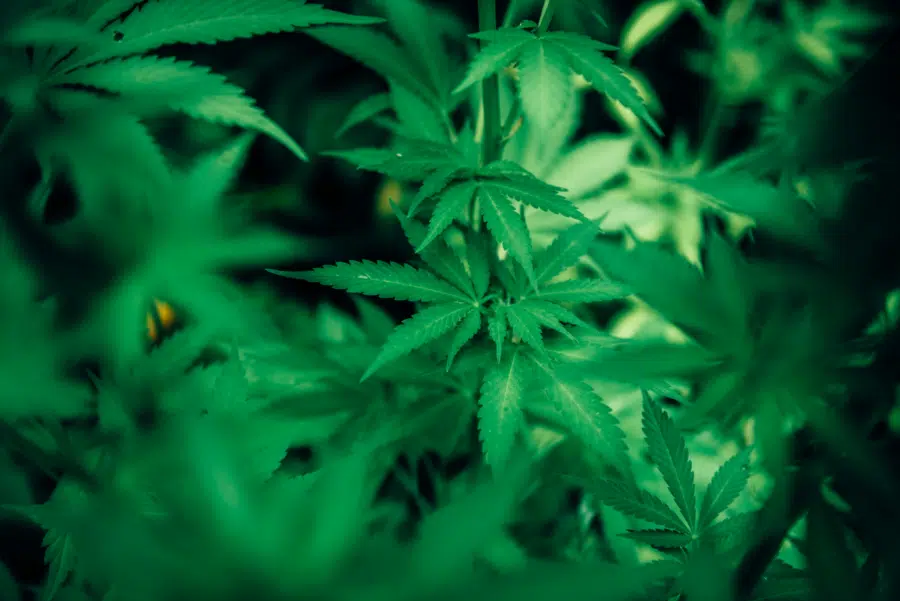
It is the most important growing stage for controlling the factors necessary for healthy and delicious buds. This period lasts for about 3 to 16 weeks, depending on the strain. The recommended light exposure for this stage is 18 hours per day followed by 6 hours of darkness.
In the vegetative stage, the ideal light to grow your marijuana plants is blue light. The benefits of blue usable light in the vegetative stage include;
- It makes the plants more compact and bushier to support large flowers
- The chlorophyll in cannabis plants absorbs blue light and uses energy from blue photons to produce a high yield through photosynthesis.
During this stage, you can decide how tall you want your plant to be before proceeding to the flowering stage. If you wish to have longer plants, you can maximize the time you expose the plant to light.
More than 20 hours of light per day will ensure that the plant grows best in the vegetative stage. Ensure that you have enough space to cater to this growth, as it’s not uncommon for some weed strains to more than double in size during this stage.
Flowering Stage
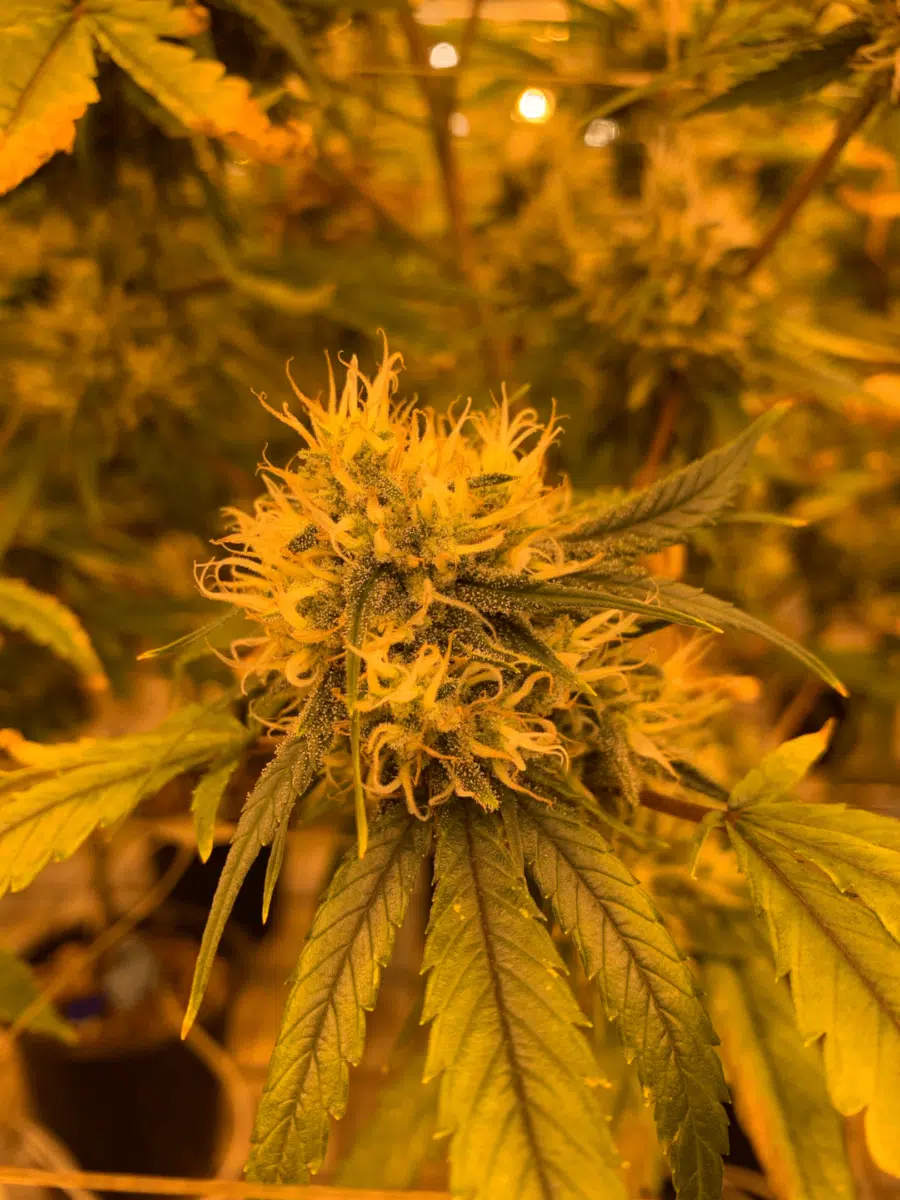
It is the final stage of growth of the cannabis plant and it takes about 8 to 11 weeks.
The lighting demands for the plant in this stage aren’t as high as in other stages. In an outdoor setting, the weed starts flowering in the late summer, when natural light diminishes.
As a grower, you can mimic these conditions by gradually providing your cannabis plants with fewer and fewer hours of light. Start by reducing from 18 to 12 hours of light per 24 hour cycle.
It is important to ensure that during the 12 hours of light deprivation, your plants receive absolutely no light. Even a little bit of light getting into your grow area during this time could cause your plants to re-veg.
The ideal color spectrum for the cannabis plant in the flowering stage is red in the 610 to 750 nm wavelength. It has the following advantages;
- It enhances photosynthesis
- It is important for the plant’s growth in biomass
- It encourages the marijuana plant to grow tall and to create space between the leaves. The plant does this in preparation for multiple potential bud sites.
Mixing Blue and Red Color LED Grow Lights
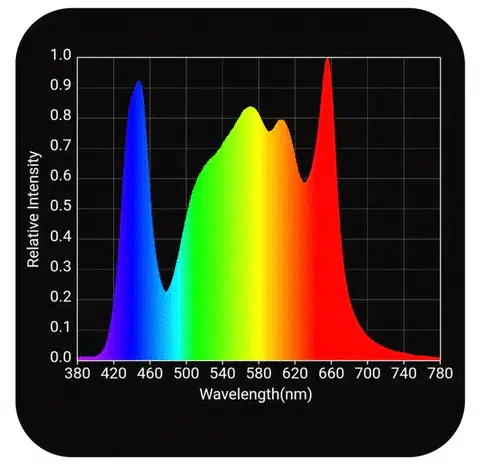
Some growers may argue that to achieve a well-balanced plant; you should combine the blue and light colors throughout the growing process. They claim that doing so mimics the usable light spectrum that comes from the sun.
Here are several ways to use the blue and red color spectrum combination.
- Using a purple LED light with a veg/bloom switch – Manufacturers often make LEDs that you can switch depending on the growth stage of the marijuana plant.
- Using a full spectrum light – For beginner growers, starting with a full spectrum LED light with both blue and red colors is a good idea.
It saves you the hassle of switching the lights back and forth and allows you to concentrate on learning the basics of growing a cannabis plant. The i-Venoya 75W LED Grow Light is one such type of LED lamp that switches on the full spectrum. - Using single LED lights in ratios – Growers using single blue and red lights together may use more of one light over the other in a certain growth stage.
For example, during the vegetative stage, a grower can use blue and red LED lights in a ratio of 3:1, respectively, and vice versa during the flowering stage.
Distance to Place LED Lights When Growing Marijuana
The distance you place your LED lights influences the healthy growth of your cannabis plants. Proper placement of the lights will ensure that you regulate the number of lumens the plants are exposed to and the heat they receive.
The placement of the grow lights differs for the different stages of growth. Here is a breakdown of the required heights in each stage.
- Seedling Stage – Place the LED lights high up from the plant canopy during this stage. You may be tempted to expose your young seedlings to excess light to induce faster growth, but If you do so, you risk drying up the soil or growing medium with extra heat. Your young plants may also not withstand the excess exposure, leading to light burn.
- Vegetative Stage – During this stage, the plant’s lighting requirements are high, so it’s important to place the LED lights near the plants’ canopy. It would help if you did not expose the plants to excess light, so make sure to raise your lights as your plants grow. As you adjust the lighting level in this stage, be sure to monitor the plants for the adverse effects of too much light.
- Flowering Stage – During this stage, it is important to phase out the LED grow lights as the plant’s lighting needs aren’t that high. Start by placing the lights around 16 inches from the canopy, then gradually increase the distance to 36 inches.
Factors to Consider Before Buying an LED Grow Light
Here are important aspects of indoor marijuana growing that you should know to get the best LED grow lights for your cannabis strain.
Price
A grow light can cost from as low as $100 to as much as $2000. Generally, higher-priced units provide more settings, greater intensity, and better build quality.
Another cost factor is the electricity bill you’ll have to pay monthly. LED grow lights won’t consume a lot of power thanks to their energy-saving properties, but the bigger the growing operation, the higher the cost of electricity will be.
The frequency of growing weed will also influence the overall cost of buying the lights. For example, if you buy an expensive LED light, then it means that you’ll get a return on your investment if you use it to get multiple harvests in a year.
The Number of Plants
Most states that allow the planting of weed will have regulations regarding the number of plants you can plant in your home. For example, most states will limit the number of plants from 6 to 12. One or two lights should cover these lights.
If you’re planning on growing marijuana indoors on a large scale, you’ll need several huge LED lights or many small ones. When growing marijuana on a large scale, it is important to consider the room’s size and grow space. It will dictate the size of the grow lights you’ll install.
Power
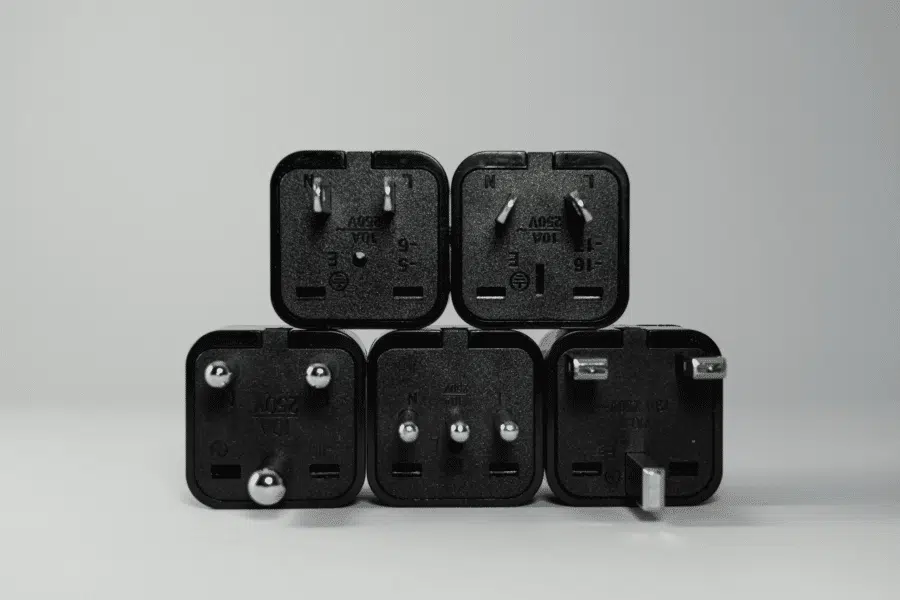
It can be difficult to compare the power outputs for LED grow lights as manufacturers use several metrics and standards to quantify them.
Generally, 1 watt will provide 90 lumens of light output. There is also a standard lumen requirement for a weed plant in the different stages of growth.
For example, in the seedling stage, the plants require 2,000 lumens for every square footage. It translates to power needs of 23 watts per square footage. In the flowering stage, the lumen requirement goes up to 10,000. It translates to power needs of 113 watts per square footage.
Determining the power needed for growing your marijuana also helps you choose the right LED light.
Safety
When growing marijuana indoors, you’ll use a lot of electrical equipment to grow weed effectively. Since this equipment runs unsupervised for most of the time, ensure you maintain high safety standards.
For example, you should consider the power needs of the grow lights. Chances are that you’ll be running the lights constantly for a long period. Make sure you’re aware of how much heat they produce and the ideal temperature and humidity for cannabis growing.
It’s also important to make sure that the electrical circuit you’re running your equipment from is rated to handle the load. You wouldn’t want unscheduled outages to ruin your crops.
The Growth Stage
Invest in LED lights that can switch to different modes depending on the stage of growth of your cannabis plants, providing them with full spectrum light when needed.
Another option is using a single light for all your growth stages. As long as you regulate the lighting hours, your marijuana plant will still produce buds.
Using a single light will have the following disadvantages to the overall outcome of the weed plant.
- A longer duration of flowering and budding
- Low cannabinoid content that reduces the potency of the plant
- Small, shriveled buds
Ventilation
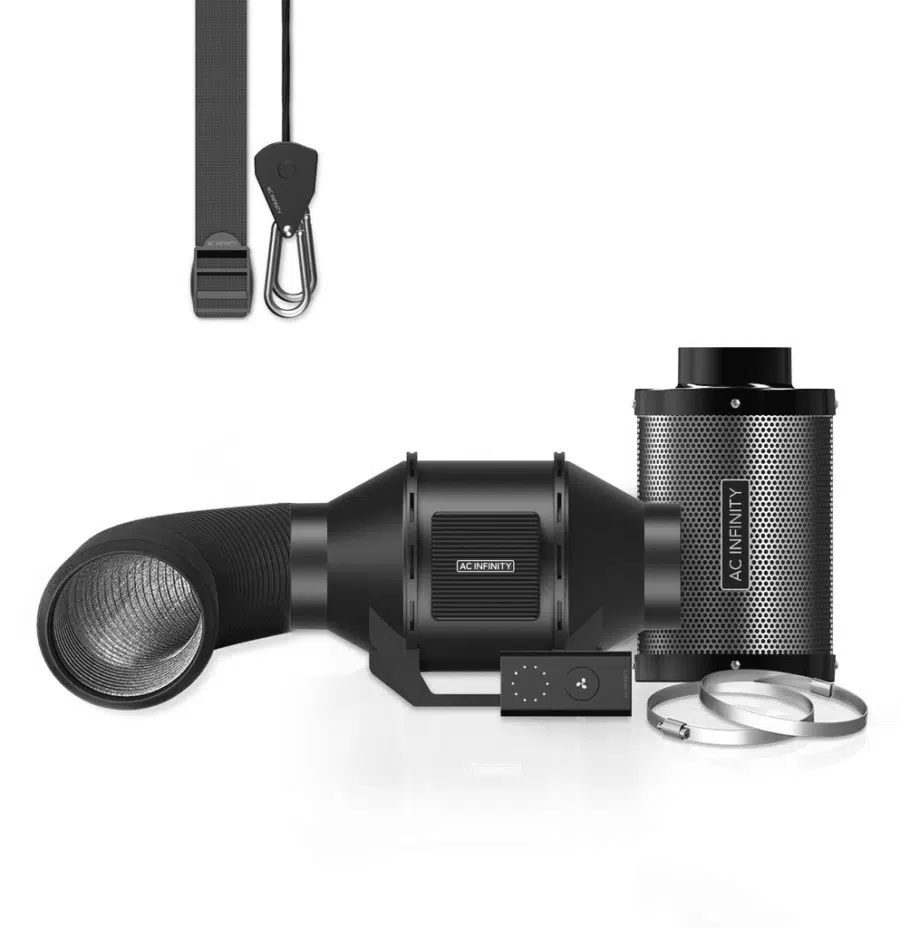
You’ll need to install a ventilation system when working with a small tight space as your grow area. LED lights that don’t run hot can save you on ventilation costs.
Light Spectrum
Some LED grow lights will produce only a certain color and remain with this color for the whole duration of growth.
Other LED lights produce the full spectrum. You’ll gain some great advantages from choosing full spectrum LED lights, especially in terms of plant nourishment for each growth stage.
The following are the commonly used color spectrums and their use in the growth of marijuana.
- Blue Light – Young cannabis plants can absorb blue lights in their early development stages (seedling and vegetative). It’s crucial to the plant’s growth.
- Red Light – It’s the light that older weed plants absorb in preparation for harvest. It’s the spectrum of light the plant needs in its flowering stage to form healthy cannabinoid-filled buds.
- White Light – It contains all the color spectrums useful for the growth of marijuana. Growers can use this light from the beginning of the growth process to harvest. It eliminates the hassle of buying many different types of LED lights.
- Purple Light – It is a result of the mixture of blue and red lights. It can replace blue light in the vegetative stage, although it’s not as effective.
Growers also use the green light, especially at night or during the dark cycle, because it doesn’t interrupt it. The green light penetrates the plant’s tissues and helps the plant to gain form and also flower.
The Led Grow Light Brand
A well-known and trusted brand gives you the assurance and peace of mind that you’ll get the desired yield output from your cannabis. There are hundreds of LED grow light brands in the market and most of them offer a range that suits each budget.
Benefits of Using LED Grow Lights
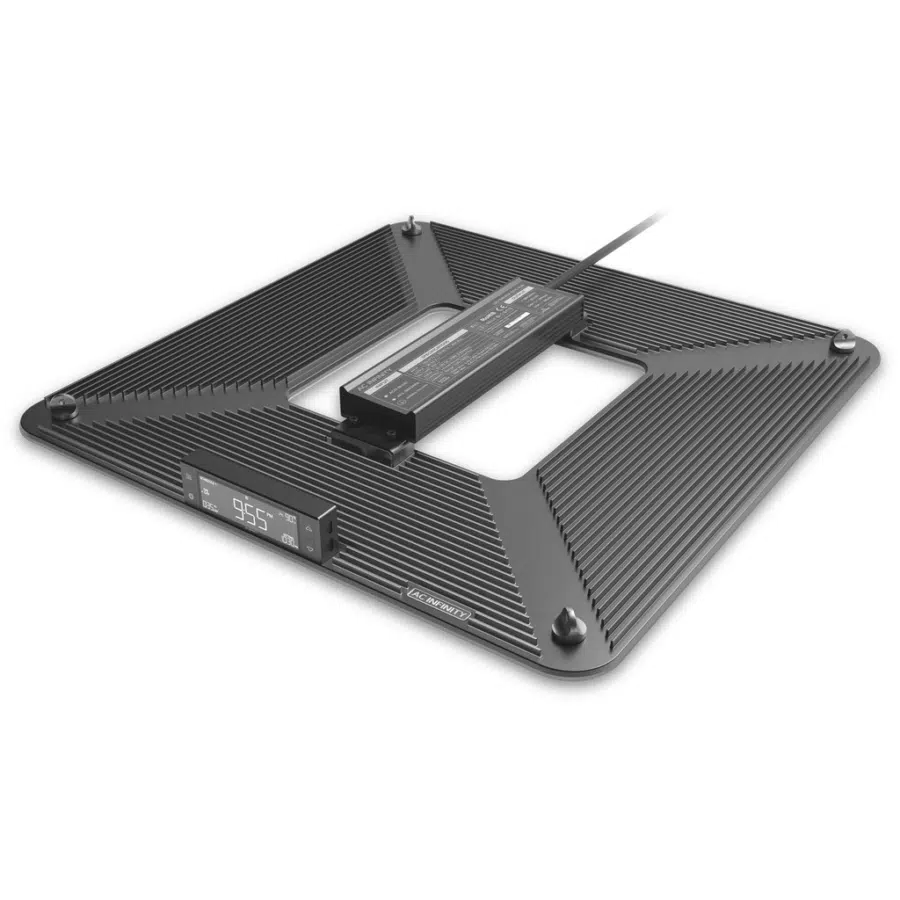
Whether you’re thinking about making the switch from HPS lights or, you’re starting a grow from scratch, here are some more benefits to switching to LEDs.
Environmental Friendly
LED lights provide a cleaner light source for growing marijuana which saves on carbon emissions down the line.
LED lights don’t contain heavy metals like mercury, which prove to be environmental hazards for years after the life of the product.
It means that at the end of the LED lights’ lifespan (usually 6-10 Years), you can safely dispose of the LED lights without worrying about the environmental impact.
Long Lifespan
LEDs last longer than other lighting technologies. They can last for more than 50,000 hours or 6-10 years. This means you won’t have to buy new lighting sources for long. The less money you spend on replacing equipment, the more you’ll be able to spend on trying out new strains.
Reduction in Water Wastage
If the cannabis grow room temperatures become too high, your plants will consume more water. LED lights maintain cooler temperatures in the grow room, ensuring that the plants won’t use more water than needed.
Reduction in Energy Costs
With LED lights, electricity consumption is lower than with other light systems since they’re very energy efficient. They can consume up to 75% less energy than incandescent lights.
Full Energy Spectrum
LED lights meet all the lighting requirements of your marijuana plant. With the right LED light system, you won’t have to switch out bulbs during different growth stages.
The lighting will be sufficient for growing cannabis through its germination, seedling, vegetative, and flowering stages.
Increase in Yields
The cannabis plant requires varying amounts of light during its different stages of growth. The proper utilization of LED lights in these different stages will determine the plant’s yield down the line.
LED lights that mimic UV light can be particularly helpful in increasing the potency of the plant by encouraging the plant to produce trichomes full of cannabinoids.
Emission of Less Heat
While excess heat (temperatures above 85°F) won’t necessarily kill a marijuana plant, it can slow and stunt its growth. It may also affect the potency of the plant.
LED lights solve this problem since they produce less heat than other artificial light sources. They utilize heat sinks that absorb most of the LED’s heat before dissipating it into the environment.
Bug Prevention
Bugs are usually attracted to blue and green ultraviolet rays. Most LEDs don’t have a UV light, or they have it in small quantities.
This means you can grow your marijuana crop without attracting pests and diseases that may attack the plant.
Less Bulky
The advantage of LED lighting technology is that it’s very flexible. This means that arrays can be made into most shapes. The flexibility of these lights allows them to fit into small grow areas.
Disadvantages of Using LED Lights for Cannabis Grows
LED lights may provide several pros, but there are some downsides to using these lights. They include;
Higher Initial Cost
Good quality LED lights come with a higher price tag than other lighting systems. While this may turn off many marijuana growers, it’s an investment that will save you costs in the long run.
Their Dependence on Surrounding Temperature
LED performance depends on the ambient temperature of the room it is in. This is commonly referred to as the thermal management properties of LED lights.
When temperatures are too high or too low, the lighting system may not function effectively, and continued overheating will shorten the lifespan of your LED cannabis lights.
To counter this problem and maintain an adequate heat sink, manufacturers are developing LED lighting systems with a wide operating temperature range from -50°C to 100°C.
Their Light Intensity May be Low
For the most part, the lower power consumption of LED lighting systems can only be seen as beneficial. When it comes to more budget-conscious LED light brands, this may also mean a decrease in the light output.
In terms of the plant’s nourishment, it may be a disadvantage. Compared to other grow lights, such as High-Intensity Discharge (HID) lights, low-cost LEDs provide less power which means lower light intensity. This in turn means that plants won’t grow to their full potential.
Manufacturers Lack Standard Specs
Due to the versatility of LED lights, most manufacturers make the lights using their own pre-defined standards. As a grower, you’ll have to thoroughly research the lights to know which ones will be best suited to your needs.
The Disadvantage of Blue Light
Constant exposure to blue light in your grow area could lead to macular degeneration that comes with old age. Other problems that can arise with long exposure to blue light are the emergence of cataracts and the development of eye cancer in rare cases.
For this reason, full-time growers should opt for blue light blocking glasses and other measures to protect their eyesight.
Grow Your Cannabis Plants Like a Pro
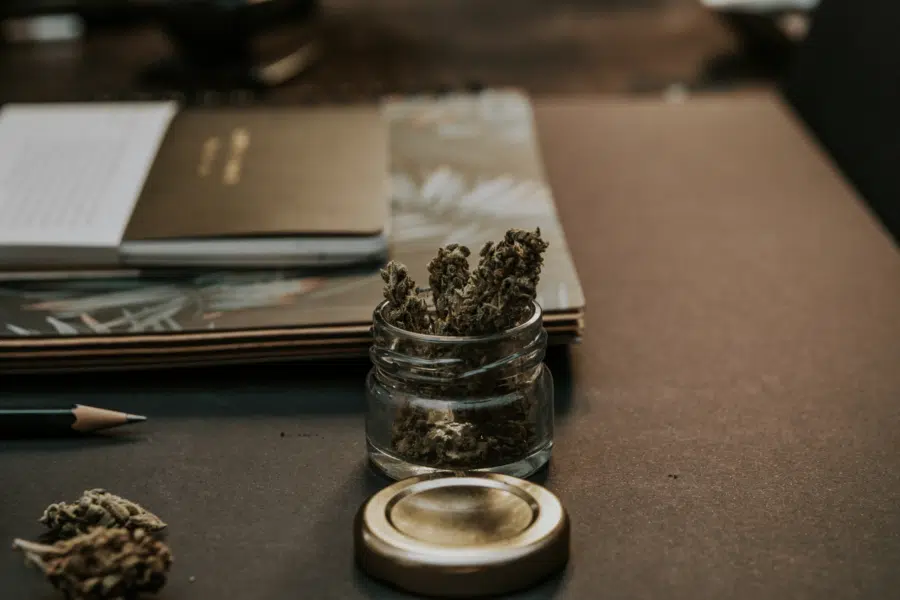
The usage of LED lights may be reasonably new to the cannabis growing scene but there’s no denying that it’s here to stay. From long-term cost savings, to ease of installation, LED lights present a great solution to cannabis growers of all levels.
Knowing the light requirements in the different stages of growth will ensure that you have better yields that translate to a quality THC-filled plant in a short period.
FAQs
How Much LED Light Is Needed for Cannabis?
To get the amount of LED light needed to grow cannabis, use the watt per square foot principle (watt/sq ft). The efficacy of the LED light in regards to watt per square foot is as follows.
- Low efficacy – 50 to 60 watts per square ft
- Medium efficacy – 30 to 40 watts per square ft
- High efficacy – 25 to 30 watts per square ft
How Many Plants Can a 1000W LED Light Grow?
A 1000W light will produce 90,000 lumens. Considering that a single cannabis plant will require 3,000 lumens for adequate growth, 90,000 lumens is theoretically enough for 30 plants.
Can Cannabis Get Too Much LED Light?
Light is necessary for the growth of a cannabis plant, but too much of it can harm the plant too. Some unfavorable outcomes of exposing your cannabis plant to too much light LED light include;
- The plant could suffer from a nutrient burn due to the faster absorption of too many nutrients induced by excess light.
- Light burn and discoloration of the plant. It is easy to identify light burn as you’ll notice the cannabis leaves pointing upwards with a white or yellow discoloration.
- Delayed budding in the flowering stage.
- Longer periods of vegetative growth.
- Excessively tall plants.
- Weak plants with branches that can’t support the buds in the flowering stages.
When growing weed, you need to know the following aspects regarding light.
- The intensity of light in terms of lumens to expose your plant to.
- The periods of light exposure (“on” times vs dark hours)
- The placement of your light in the grow room. Placing the light too near the plants may damage them.
- The type of light in the color spectrum to expose your plant to. For example, too much red light in the vegetative stage may not be beneficial to your plant; or too much blue light in the flowering stage may delay the budding of the cannabis.
Does More Light Mean More Yield Cannabis?
Generally, for most crops, an increase in light by 1% results in an increase in yield by 1%. For cannabis plants, it is also true, but you need to monitor your plants’ growth stages to know the right amounts and the correct time to expose them to light.
Are There Cannabis Strains That Don’t Rely on Light to Flower?
Yes. Autoflower cannabis starts producing buds without the need for any light period changes.
The downsides of autoflower cannabis include smaller yields and often, lower potency when compared to feminized or regular cannabis strains.
You can visit The Seed Fair to learn more about various cannabis growing techniques that ensure optimal yields. You also get access to the best weed seeds and other cannabis products.


